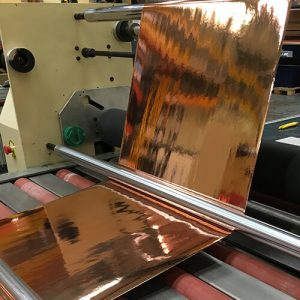Foiling services are capable of delivering some of the most beautiful results you have ever seen. At the same time, if the application is incorrect to foil can ruin everything. That is why people rely on us. We have the experience, talents, and equipment to get you the results you desire. In addition, we give you access to a diverse range of foils in different colours and finishes.
While our focus is on offering decorative and functional foiling, there are also a number of amazing uses for foils. One of them is insulation. We want to take a look at it below and compare reflective foils to fibreglass.
Making the correct choice isn’t simple
 When it comes to insulation material, making the correct choice isn’t straightforward. The reason is that there are multiple details you must take into account. You can’t select the most efficient option otherwise. Every insulation product that exists comes with its own advantages and disadvantages. These depend on the area you install them in and on numerous external factors. The latter can include humidity levels and climate region. Something else that matters is the accessibility of the room you are insulating.
When it comes to insulation material, making the correct choice isn’t straightforward. The reason is that there are multiple details you must take into account. You can’t select the most efficient option otherwise. Every insulation product that exists comes with its own advantages and disadvantages. These depend on the area you install them in and on numerous external factors. The latter can include humidity levels and climate region. Something else that matters is the accessibility of the room you are insulating.
All of this is why it is vital to think about every element of insulation prior to making your final choice. You might risk finding yourself with an expensive project that isn’t serving its purpose otherwise.
What we have to do first is emphasise that there aren’t any bad or good insulation materials. When you compare them there are always pros and cons. With a general comparative review though, you can discover how efficient certain materials will be.
Explaining the options
Starting with fibreglass, it is one of the most popular insulation materials. People across the world use it because of the ease to install and composite. In addition, it is flexible so you can use it in nearly any space. You create it using fine glass fibres that are bonded using a bonding agent.
As for reflective foil insulation, this is a solution that has become popular more recently. We can attribute it to its ability to lower radiant heat. Usually, you would see people install it in loft and roof spaces. The idea is to reflect the heat back so spaces don’t overheat, particularly during the summer. The insulation tends to come in rolls of foil or thin sheets that you can easily wrap around pipes or joints. Contact us if you need the UK’s finest foiling services.
Understanding how heat is transferred
For us to comprehend the basic differences between the two insulation types, we must understand heat is transferred in three fundamental ways; through radiation, conduction, and convection.
Fibreglass reduces conductive and convective heat transfer. As we said above, the foil is best for tackling radiation. This is extremely important as 70% of heat gain and loss inside a building envelope originates from radiant heat transfer. Therefore, the foil insulation proves useful in both summer and winter.
Reflective foil insulation also has several distinct advantages that are worth mentioning. Firstly, it is safe for your health. There aren’t any harmful allergens to worry about. The insulation is also very strong, lightweight, and durable.
Another fact is that it is easy to combine with other insulating substances. Reflective foil insulation can prevent radiant transfer as well. Finally, it is effective at preventing heat gain and heat loss.
Our foiling services are decorative and protective in nature
At Foiling Services, we help clients who require our help for both protective and decorative reasons. In addition, we take great care when handling your items. As such, they are in the very best of hands.
So, if there is anything we can do for you in terms of foiling services, simply let us know. We deliver consistent high quality results for our clients.
